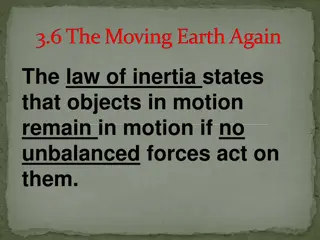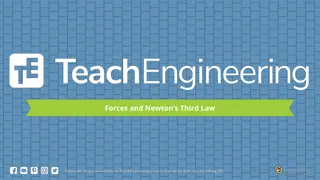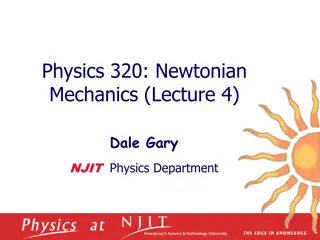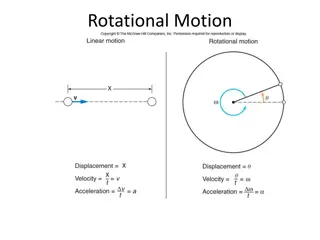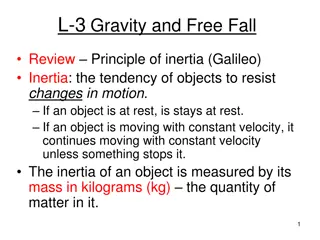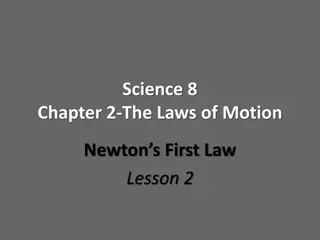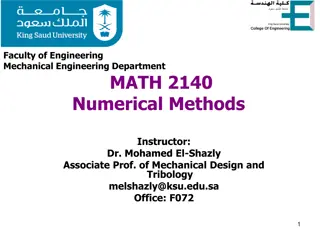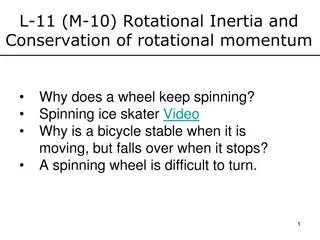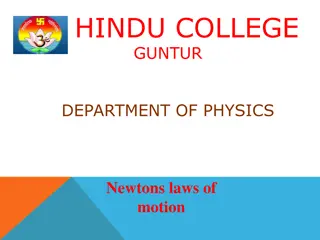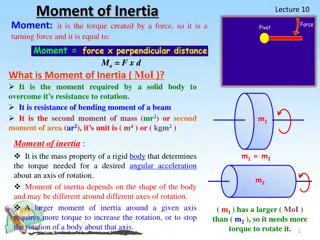Understanding Newton's First Law of Inertia
Newton's first law of inertia states that objects remain at rest or in uniform motion unless acted upon by an external force. This law, also known as the law of inertia, explains how objects tend to maintain their current state of motion unless influenced by an external force. Objects at rest stay at rest, while moving objects will continue in motion unless acted upon by a force. This fundamental concept helps us understand the behavior of objects in motion and at rest, highlighting the role of forces in changing the state of motion.
Download Presentation

Please find below an Image/Link to download the presentation.
The content on the website is provided AS IS for your information and personal use only. It may not be sold, licensed, or shared on other websites without obtaining consent from the author. Download presentation by click this link. If you encounter any issues during the download, it is possible that the publisher has removed the file from their server.
E N D
Presentation Transcript
3.4 NEWTONS LAW OF 3.4 NEWTON S LAW OF INERTIA INERTIA Newton s first law states that every object continues in a state of rest, or of uniform speed in a straight line, unless acted on by a nonzero net force.
3.4 3.4 Newton s Law of Inertia Newton s Law of Inertia Newton s first law, Newton s first law, usually called the law of inertia law of inertia, , is a restatement of Galileo s idea that a force is not needed not needed to keep an object moving.
3.4 3.4 Newton s Law of Inertia Newton s Law of Inertia Objects at Rest Objects at Rest Simply put, things tend to keep on doing what they re already doing. Objects in a state of rest tend to remain at rest. Only a force will change that state.
3.4 3.4 Newton s Law of Inertia Newton s Law of Inertia Objects at rest tend to remain at rest.
3.4 3.4 Newton s Law of Inertia Newton s Law of Inertia Objects in Motion Objects in Motion Now consider an object in motion. In the absence of forces, a moving object tends to move in a straight line indefinitely. Toss an object from a space station located in the vacuum of outer space, and the object will move forever due to inertia.
3.4 3.4 Newton s Law of Inertia Newton s Law of Inertia Blasts of air from many tiny holes provide a nearly friction-free surface on the air table. Slide a hockey puck along the surface of a city street, the puck soon comes to rest. If you slide it along an air table where friction is almost absent, it slides with no apparent loss in speed.
3.4 3.4 Newton s Law of Inertia Newton s Law of Inertia The law of inertia provides a different way of viewing motion from the ancients. Objects continue to move by themselves. Forces are needed to overcome any friction that may be present and to set objects in motion initially. Once the object is moving in a force-free environment, it will move in a straight line indefinitely.
3.4 3.4 Newton s Law of Inertia Newton s Law of Inertia
3.4 Newtons Law of Inertia Newton s Law of Inertia 3.4
3.4 3.4 Newton s Law of Inertia Newton s Law of Inertia think! think! A force of gravity between the sun and its planets holds the planets in orbit around the sun. If that force of gravity suddenly disappeared, in what kind of path would the planets move?
3.4 3.4 Newton s Law of Inertia Newton s Law of Inertia Answer: Each planet would move in a straight line at constant speed.
3.4 Newtons Law of Inertia Newton s Law of Inertia 3.4 think! think! Is it correct to say that the reason an object resists change and persists in its state of motion is that it has inertia?
3.4 3.4 Newton s Law of Inertia Newton s Law of Inertia Answer: We don t know the reason why objects persist in their motion when nothing acts on them, but we know that they do, and we call this property inertia inertia. .



